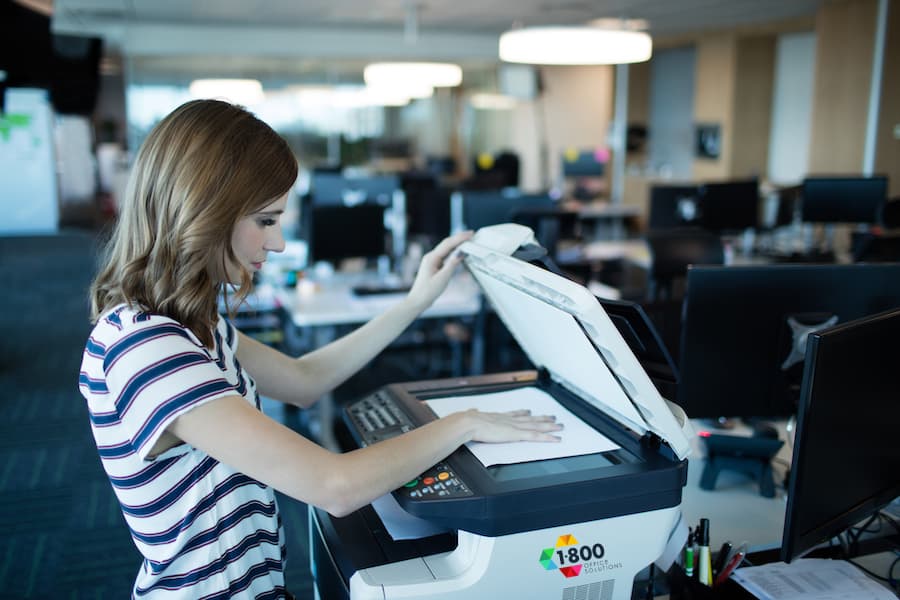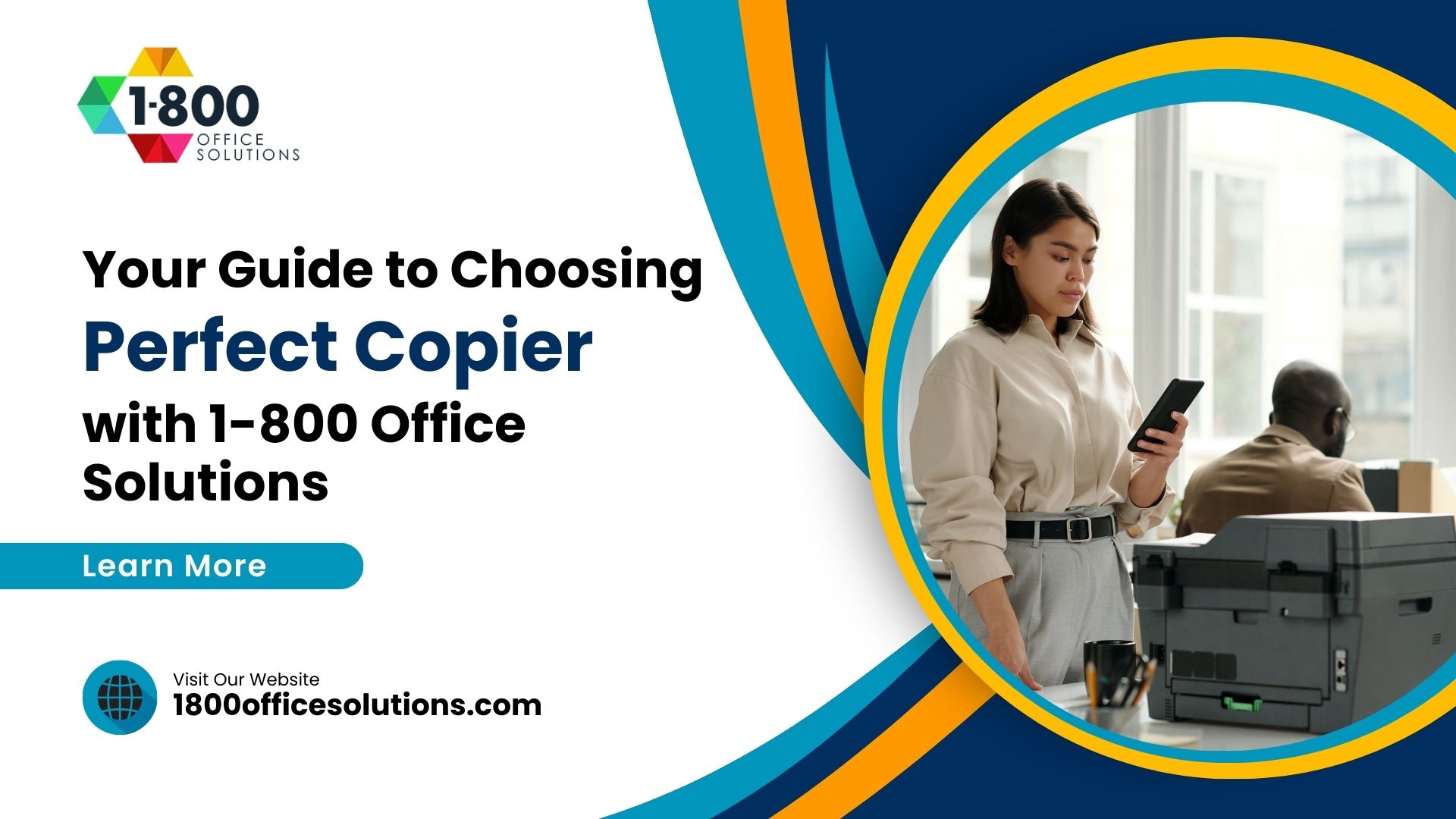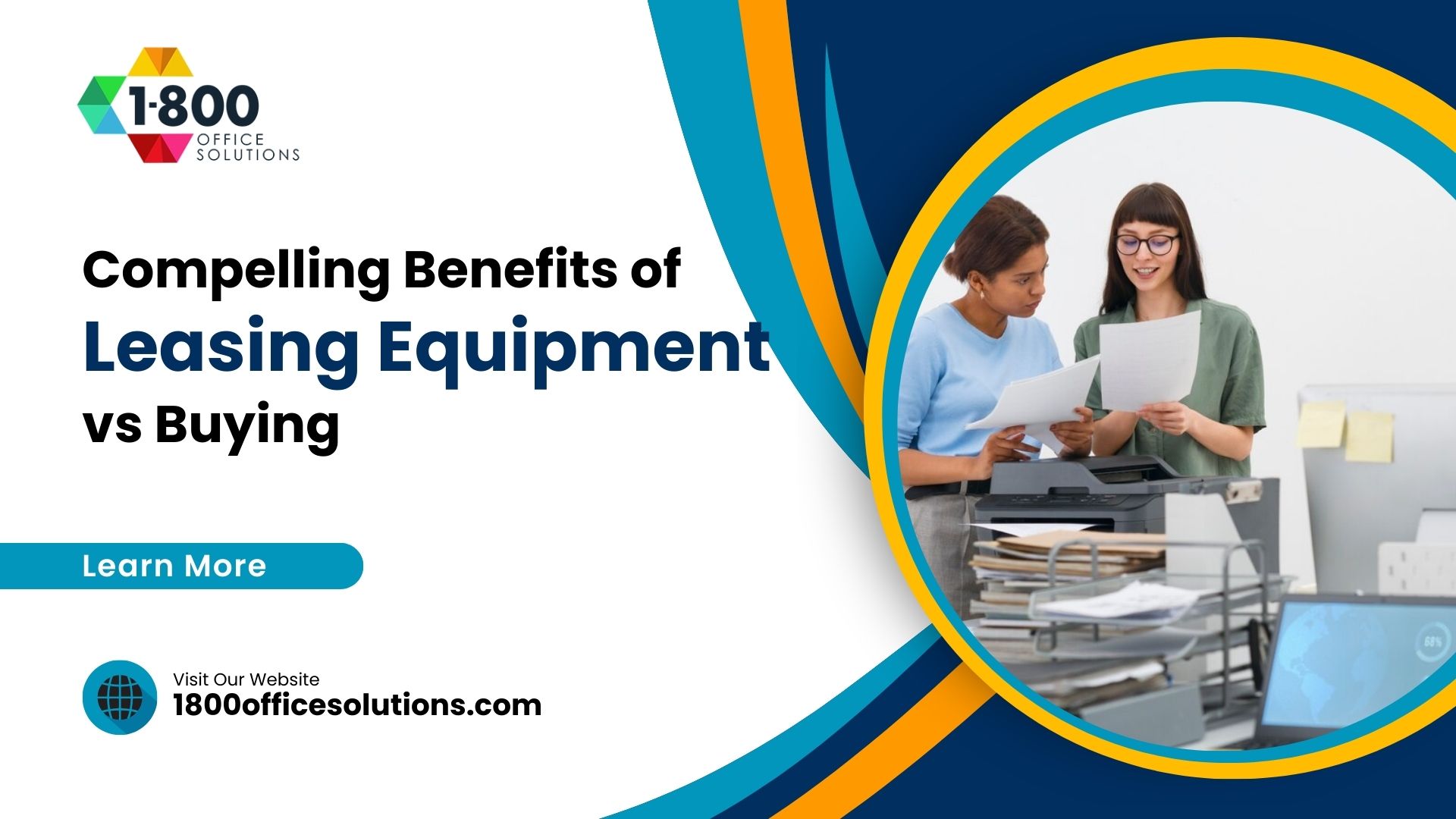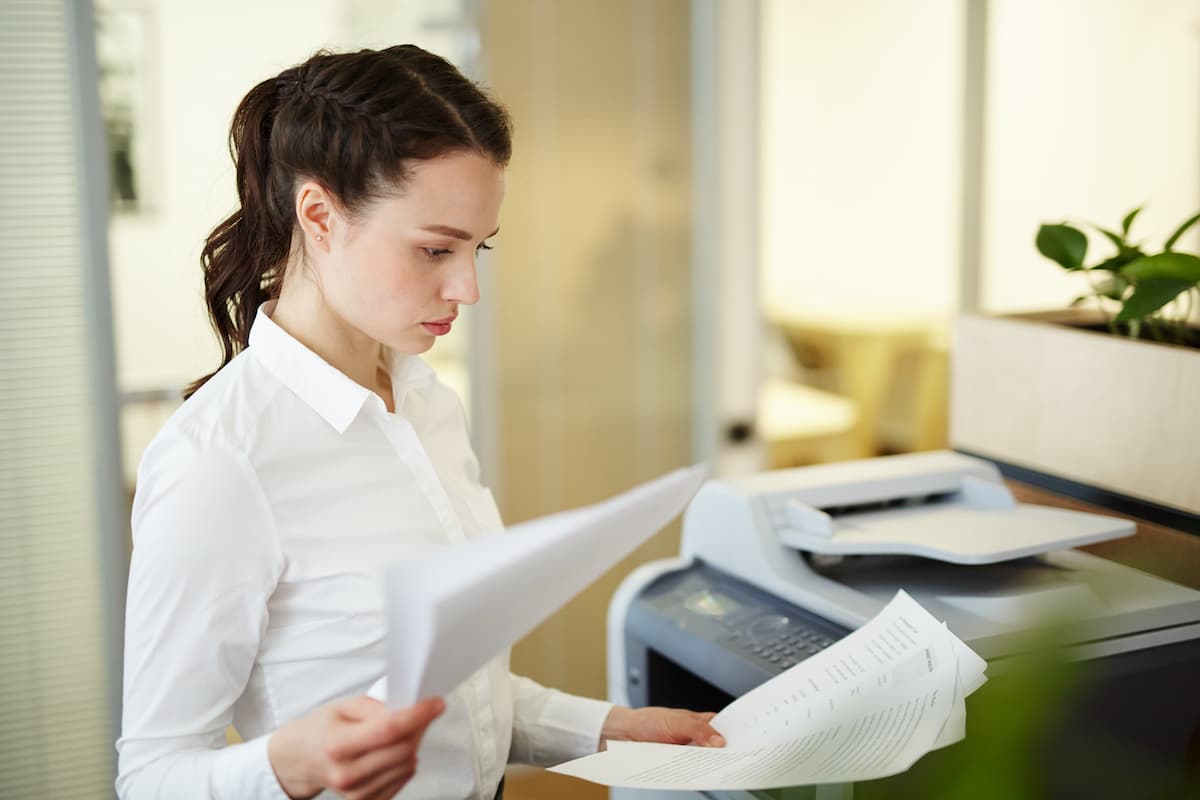Printing Revolution: How Does Leasing a Printer Work? Prepare to be Amazed
The Evolution of Printing
The printing revolution has been a transformative force in human history. From the invention of the Gutenberg press in the 15th century to the rise of digital printing in the late 20th century, the ability to reproduce text and images quickly and cheaply has fundamentally changed how we communicate and share information.
In the early days, printers were mechanical devices that required manual operation. The advent of the computer age brought about a new wave of printing technologies, including laser and inkjet printers. These devices, while more efficient and versatile than their predecessors, were still expensive and out of reach for many businesses and individuals. In this blog post you will learn the mechanics of leasing a printer and comprehensive guide.
However, the last few decades have seen a significant shift in the printing landscape. The rise of 3D printing, for instance, has opened up new possibilities for manufacturing and prototyping. At the same time, advances in digital printing have made it possible to produce high-quality prints at a fraction of the cost and time of traditional methods.
The Impact of Printing on Business and Society
The printing revolution has had a profound impact on both business and society. For businesses, the ability to print documents, promotional materials, and products on-demand has led to increased efficiency and reduced costs. This is particularly true in the era of digital printing, where the cost per print decreases as the volume increases.
Moreover, the rise of managed print services has allowed businesses to outsource their printing needs, freeing up resources and reducing overhead costs. This model also enables businesses to keep up with the latest printing technologies without the need for significant upfront investment.
On a societal level, the printing revolution has democratized access to information. The ability to print books, newspapers, and other materials at scale has played a crucial role in the spread of literacy and education. More recently, the advent of digital printing has made it possible for individuals to print their own books, posters, and other materials, further democratizing the production of printed materials.
Introduction to Leasing a Printer
For many businesses, owning a printer can be a significant investment. Not only do you have to pay for the printer itself, but you also have to consider the costs of maintenance, toner, and upgrades. This is where leasing a printer comes into play.
When you lease a printer, you enter into a lease agreement with a provider who owns the printer. You pay a monthly fee to use the printer, and the provider takes care of maintenance and repairs. This arrangement can be particularly beneficial for businesses that need high-quality prints but don’t have the budget to purchase a printer outright.
There are several advantages to leasing a printer. First, it allows you to access the latest printing technology without a significant upfront investment. This is particularly important in an industry where technology is constantly evolving. Second, leasing a printer can be more cost-effective than buying, especially if you factor in the costs of maintenance and supplies.
Moreover, many lease agreements include a managed print service, where the provider takes care of all your printing needs, including supplying toner and performing regular maintenance. This can free up your staff to focus on other tasks and reduce the burden of managing your printing infrastructure.
Finally, leasing a printer gives you the flexibility to upgrade to a newer model when your lease agreement ends. This means you can always have access to the latest printing technology, whether it’s a high-speed laser printer or a multifunction printer that can print, scan, and fax.
The printing revolution has transformed how we communicate and share information. Whether you’re a business looking to streamline your printing needs or an individual seeking to harness the power of modern printing technology, leasing a printer can be an excellent option.
The Mechanics of Leasing a Printer
Understanding Printer Leasing
Printer leasing is a business arrangement where a company or individual rents a printer from a leasing company for a specified lease period. This is an alternative to buying a printer outright, which can be a significant upfront cost, especially for high-end printers and copiers.
When you lease a printer, you enter into a lease contract with the leasing company. This contract outlines the terms of the lease, including the monthly lease payment, the length of the lease, and what happens at the end of the lease.
Leasing a printer can be a good option for businesses that need a high-quality printer but don’t have the budget to buy one outright. It can also be a good option for businesses that want to keep up with the latest printing technology without having to constantly invest in new equipment.
The Benefits of Leasing a Printer
There are several benefits to leasing a printer:
- Cost-effectiveness: Leasing a printer can be more cost-effective than buying one, especially when you factor in the costs of maintenance and supplies. With a lease, you pay a fixed monthly cost, which can be easier to budget for than the unpredictable costs of owning a printer.
- Access to the latest technology: When you lease a printer, you can often upgrade to a new model at the end of your lease term. This means you can always have access to the latest printing technology, whether it’s a high-speed Xerox or Lexmark printer or a multifunctional printer that can print, scan, and fax.
- Flexibility: Leasing a printer gives you the flexibility to change your printing setup as your business needs change. If you need a faster printer or a printer with different features, you can simply change your lease instead of having to sell your old printer and buy a new one.
- Tax benefits: In many cases, the cost of leasing a printer can be deducted as a business expense, which can provide tax benefits.
The Cost of Leasing a Printer
The cost of leasing a printer can vary widely depending on the type of printer, the length of the lease, and the terms of the lease contract. In general, you can expect to pay a monthly lease fee, which covers the use of the printer and may also include maintenance and supplies.
It’s important to read the lease contract carefully to understand what is included in the monthly cost. Some leases may include a maintenance contract, which covers repairs and regular maintenance, while others may charge additional costs for these services.
Also, keep in mind that while leasing a printer can be more cost-effective than buying one outright, you may end up paying more over the long term. This is because you’re paying for the convenience and flexibility of leasing, as well as the ability to upgrade to a new printer at the end of your lease.
How to Choose the Right Printer to Lease
Choosing the right printer to lease depends on your specific needs and budget. Here are some factors to consider:
- Print volume: How much printing do you do? If you print a lot, you may need a high-capacity printer. If you only print occasionally, a smaller, less expensive printer may be sufficient.
- Print quality: Do you need high-quality prints, or is standard quality sufficient? High-quality prints require a more advanced printer, which may be more expensive to lease.
- Features: Do you need a printer that can also scan and fax documents? If so, you may need a multifunction printer.
- Cost: How much can you afford to pay per month? Remember to factor in the costs of supplies and maintenance, as well as the lease payment.
The Process of Leasing a Printer
The process of leasing a printer typically involves the following steps:
- Determine your needs: Before you start looking for a printer to lease, determine what you need in a printer. Consider your print volume, print quality needs, and any additional features you need.
- Research leasing companies: Not all leasing companies are created equal. Look for a company that offers flexible terms, fair prices, and good customer service.
- Choose a printer: Once you’ve found a leasing company you like, choose a printer that meets your needs. The leasing company can help you choose the right printer for your needs.
- Sign a lease contract: Once you’ve chosen a printer, you’ll need to sign a lease contract. This contract will outline the terms of the lease, including the monthly payment, the length of the lease, and what happens at the end of the lease.
- Start using the printer: Once the lease is signed, you can start using the printer. The leasing company will typically deliver the printer to your office and set it up for you.
- Maintain the printer: During the lease period, you’ll need to maintain the printer. This may include replacing ink cartridges, cleaning the printer, and scheduling regular maintenance.
- End of the lease: At the end of the lease, you’ll typically have the option to return the printer, buy it outright, or lease a new printer. The best option will depend on your needs and budget at the time.
Leasing a printer can be a cost-effective and flexible way to meet your printing needs. Whether you’re a small business owner looking to streamline your printing costs or a large enterprise seeking the latest printing technology, leasing a printer could be the right solution for you.
The Amazing Aspects of Printer Leasing
The Flexibility of Printer Leasing
One of the most amazing aspects of printer leasing is its flexibility. Unlike buying a printer outright, leasing allows you to adjust your printing setup to meet your changing business needs. Whether you need to upgrade to a new printer with more advanced features, or downsize to a smaller, more cost-effective model, leasing makes it easy to adapt.
Moreover, at the end of the lease term, you have the option to return the printer, buy it outright, or lease a new one. This flexibility can be particularly beneficial for businesses in fast-paced industries where technology is constantly evolving.
The Technological Advancements in Leased Printers
Leasing a printer also gives you access to the latest technological advancements in printing. Leasing companies often offer the latest models from leading brands like Xerox and Lexmark, which come equipped with advanced features like high-speed printing, color printing, and multifunction capabilities.
For instance, many modern printers and copiers are now multifunctional devices (MFPs) that can print, scan, copy, and even fax documents. Some also offer advanced document management features, such as automatic duplexing, stapling, and hole punching, which can help streamline your office workflows.
The Environmental Impact of Leasing a Printer
Leasing a printer can also have a positive environmental impact. When you lease, you’re effectively sharing a printer with other businesses over its lifetime, which can help reduce the total number of printers produced and ultimately end up in landfill.
Moreover, many leasing companies offer maintenance contracts as part of their leasing program, which ensures that the printers are well-maintained and operate at peak efficiency. This not only helps prolong the life of the printer but can also reduce energy consumption and printing costs.
What People Also Ask
What are the benefits of leasing a printer?
Leasing a printer can provide several benefits for businesses, including lower upfront costs compared to purchasing a printer outright, access to the latest technology, and the ability to upgrade to a new printer at the end of the lease term. Additionally, many leasing contracts include maintenance and support services, which can help ensure the printer operates efficiently and reduce the burden of printer management.
What are the potential drawbacks of leasing a printer?
While leasing a printer can offer many benefits, there are also potential drawbacks to consider. Over the long term, the total cost of leasing can exceed the cost of purchasing a printer outright. Additionally, leasing contracts often lock you into a set term, which may not provide the flexibility needed if your printing needs change over time. It's also important to understand all the terms of the lease agreement, as there may be additional fees or costs.
How does maintenance work when leasing a printer?
In many printer leasing agreements, maintenance and support are included as part of the contract. This means the leasing company is responsible for regular servicing, repairs, and sometimes even supplying consumables like ink or toner. However, the specifics of what is included can vary between leasing companies, so it's important to clarify these details before signing a lease agreement.
Can I upgrade my printer during the lease term?
Most leasing companies allow you to upgrade your printer at the end of your lease term, and some may even allow upgrades during the lease term. This means you can keep up with the latest printing technology without the need to sell an old printer and buy a new one. However, the terms and conditions for upgrades can vary between leasing companies, so it's important to discuss this with the leasing company before signing a lease agreement.
Conclusion
The future of printer leasing is bright, with advancements in technology and changing business needs driving its growth. As businesses continue to seek cost-effective and flexible solutions, leasing offers an attractive alternative to buying a printer outright. It provides access to the latest printers and copiers without the significant upfront cost and allows businesses to upgrade to new models as technology evolves.
Furthermore, the trend towards managed print services (MPS) and office printer leasing is likely to continue, offering businesses a hassle-free way to manage their printing needs.
In conclusion, leasing a printer can be a strategic decision that brings numerous benefits, including cost savings, access to the latest technology, and flexibility.
However, it’s crucial to consider your specific business needs and circumstances before deciding whether to lease or buy.
Always remember to thoroughly understand the terms of the lease contract, including the monthly lease payment, the length of the lease, and what happens at the end of the lease.
With careful consideration and planning, leasing a printer can be a valuable solution that supports your business operations and growth.













